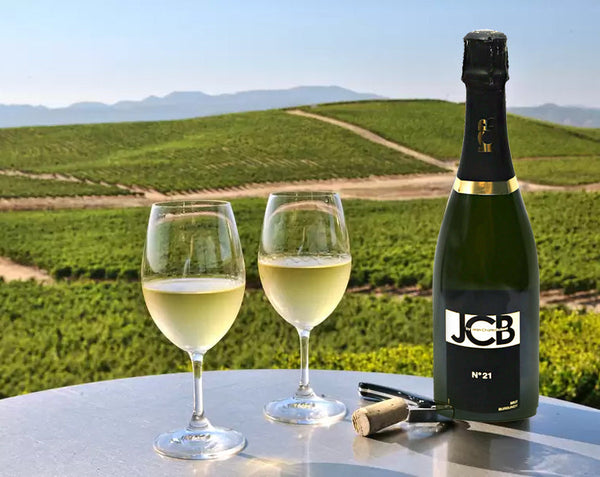What is a Cremant wine? Try Some New Bubbles!

In terms of European sparkling wines, we all have an idea of what Champagne is, and also Cava from Spain and Prosecco from Italy. But what is a Crémant? This is a French word referring to creaminess. Crémant is a sparkling wine made using the traditional method, that is, the champenoise method (with a second fermentation in the bottle), but as these wines are not made in the Champagne region, they can’t be called “Champagne.”
France hosts several different regions producing Cremant wines, and each one must comply with its own strict production regulations. Although they are made using the same method as Champagne, they originally received the name Crémant due to their lower carbon dioxide pressure (2-3 atmospheres), offering less sensation of bubbles and greater creaminess. Today, however, sparkling wines with the Crémant Designation of Origin (DO) may have the same pressure as Champagne (5-6 atmospheres), featuring very fine, delicate bubbles.
In France there are seven Cremant appellations: Crémant d'Alsace, which is the most produced, with approximately half the market share, followed by the Crémant de Bourgogne, Loire, Limoux, du Jura, de Bordeaux, and the Cremant de Die. It’s so easy to buy wine online, don’t resist the temptation to sample new sparklers!
Why Should I Consider Ordering a Cremant?
For those seeking a great quality to price ratio, the advantages of Crémant over Champagne stand out, including its price, its lighter character (though you don’t want to cellar a Cremant for more than about 3 years), and its high-level production methods. All the grapes must be harvested by hand, yields are limited by appellation regulations, and there is whole bunch pressing with limited must extraction. The grape varieties used include Pinot Blanc, Pinot Gris, Riesling, Pinot Noir, Auxerrois, Chardonnay, Chenin Blanc, Cabernet Franc, Sauvignon Blanc, and Aligoté. They age in the cellar for a minimum of nine months to a year. This can make these wines more nuanced because Cremants do not have so many limitations on grape varieties as Champagne, and they can express their local terroir. For those passionate about sparkling wines, there is much to discover in Crémants!
What Regions Produce Cremant Wines That I Should Try?
Crémant d'Alsace
Whites are made from Pinot Blanc, Auxerrois, Pinot Gris, Riesling, Chardonnay, Pinot Noir
Rosés must be made from 100% Pinot Noir
The picturesque region of Alsace is located in the foothills of the Vosges Mountains in northeastern France. Over 50% of all French Crémant is made here. Grapes ripen well in Alsace, thanks to the dry, sunny climate made possible by the adjoining mountain refuge. The soils are a true mosaic, the result of alluvial fans, and can support a wide variety of grapes. These Alsatian wines may be monovarietal (and labeled as such), but most are a blend, using Pinot Blanc as a base. Try the Domaine Allimant-Laugner Cremant d'Alsace Rose (the de facto “house wine” of your favorite online wine store, Bottle Barn) or the Gustave Lorentz Cremant d'Alsace Rose.
Cremant de Bourgogne
White versions come from Chardonnay and Pinot Noir with occasional use of Gamay, Pinot Blanc, Sacy, Pinot Gris, Aligoté.
Rosé wines are Pinot Noir and sometimes Gamay.
Burgundy is just south of Champagne and is widely applauded for its still wines from Chardonnay and Pinot Noir. The production of Crémant de Bourgogne occurs mainly in the northern area of Auxerre (Chablis), or further south in Rully (Côte Chalonnaise). The wines can range from the fresh, crisp styles of the north, to the rounder, fuller wines of southern Burgundy, where the grapes can reach greater maturity. Made in the traditional method, often with Chardonnay and Pinot Noir dominating, these wines share many similarities with their more expensive and famous neighbors in Champagne. Sample the JCB No. 21 Cremant de Bourgogne, which received 90 points from Wine Enthusiast, or for a stunning rose, the JCB No. 69 Brut Rose Cremant de Bourgogne.
Cremant de Limoux
White and rosé versions can be made from Chardonnay, Chenin Blanc, Mauzac (locally called Blanquette), and Pinot Noir.
Limoux, France (Languedoc-Roussillon) is located in the cooler Pyrenean mountains of southern France. Limoux wine is often made primarily from Chardonnay and Chenin Blanc. Mauzac and Pinot Noir are used as blending grapes. This region has a long history of sparkling wine production. Blanquette Méthode Ancestrale and Blanquette de Limoux are two traditional sparklers made predominantly from Mauzac. The former uniquely undergoes the finish of the first fermentation in the bottle itself, without any permitted dosing or disgorging of aged yeast cells. Try the Domaine J. Laurens Cremant de Limoux Tete de Cuvee Brut. This sparkler's zingy lemon-lime flavors evolve into fuller pineapple and citrus notes, a yeasty character adding breadth and weight to the overall experience.
By Charlie Leary


















Leave a comment